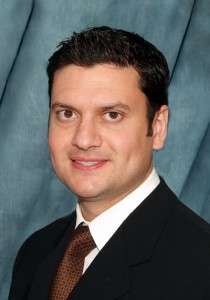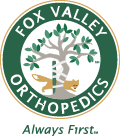
Message from your doctor…
Whether you or one of your family members or friends is considering patellofemoral knee replacement, or are scheduled for surgery, I understand this can be a stressful time. You may have forgotten some of the information we discussed during our last visit, or forgot to ask me a specific question about what to expect. This site is designed to help us stay connected, and to answer some of the most common questions patients ask me about patellofemoral knee replacements.
I want to make sure that both you and your family members have timely information at your fingertips during the days, weeks, and months following your surgery…so you can get back to enjoying the activities you love.
MOST COMMON QUESTIONS
Patellofemoral Knee Replacement
How long will my knee replacement last?
All implants have a limited life expectancy depending on one’s activity level, age, medical conditions, and weight. This can vary for each patient. It is important to remember that an implant is a medical device subject to wear that may lead to mechanical failure.
Because you are having a partial knee replacement, you may need a full knee replacement in the future (if the other cartilage in the knee wears down).
Am I too young for a partial knee replacement?
Age is not the only factor if you are in reasonable health and you have the desire and ability to keep living a productive, active life. The input of your medical doctor’s opinion is important when deciding whether a knee replacement is an option for you. Typically, partial joint replacements are done after a patient has tried a significant amount of conservative treatment (injections, anti-inflammatory medications, knee braces, sometimes other surgeries).
When can I resume normal activity after surgery?
You are encouraged to walk and move the knee as soon as possible. It is safe to put weight on your knee immediately (with your knee brace on) to begin your road to recovery.
Do I have any restrictions after surgery?
During the initial 3 months after surgery, you should avoid any sudden cutting or pivoting activities or deep squats. Injury-prone sports such as downhill skiiing, basketball, and other contact sports are not recommended after a partial knee replacement. Jogging and running are also not recommended. There are safer forms of cardiovascular exercise for your knee replacement. Biking, elliptical machines, and swimming are “better” for the knee and will likely avoid wear and tear on the implants.
Antibiotics after joint replacements
Current guidelines suggest that for your lifetime, you should take antibiotics prior to routine dental cleanings/hygiene, fillings, and more invasive dental procedures.
We recommend the use of antibiotics prior to these procedures because during each of these procedures, a small amount of bleeding can occur which may allow bacteria to “seed” or spread through the bloodstream and can potentially travel to the replaced shoulder joint (or any area of the body where there is hardware from a surgery). This can be dangerous if an infection were to start in the replaced joint. To prevent this from happening, we recommend you take antibiotics ½ hour prior to dental procedures.
If possible, for safety reasons, we recommend waiting at least 3 months after a joint replacement to have any routine dental work completed.
If you have upcoming dental work, please call our office at least 3 days in advance, so we can send the appropriate antibiotic to your pharmacy.
SPORTS SPECIFICS
We know you are eager to return to your sports and hobbies. We want to guide you safely through that process. Please use the following as a guide.
BIKING
You may start a stationary bike within 1 week of surgery. This will encourage range of motion as well as muscle strengthening
KNEELING
Because the incision over the front of your knee will be sensitive, it is recommended to wait 3-6 months before kneeling. It may be uncomfortable to kneel for 1 year or more.
JOGGING
There are safer forms of cardiovascular exercise for your knee replacement. Biking, elliptical machines, and swimming are “better” for the knee and will likely avoid wear and tear on the implants.
GOLF
1 month post-op: Putting
3 months post-op: Chipping, pitching, and half-swings with your short irons
4-5 months post-op: Full but gentle swings with irons
6 months post-op: Full play with no restrictions



